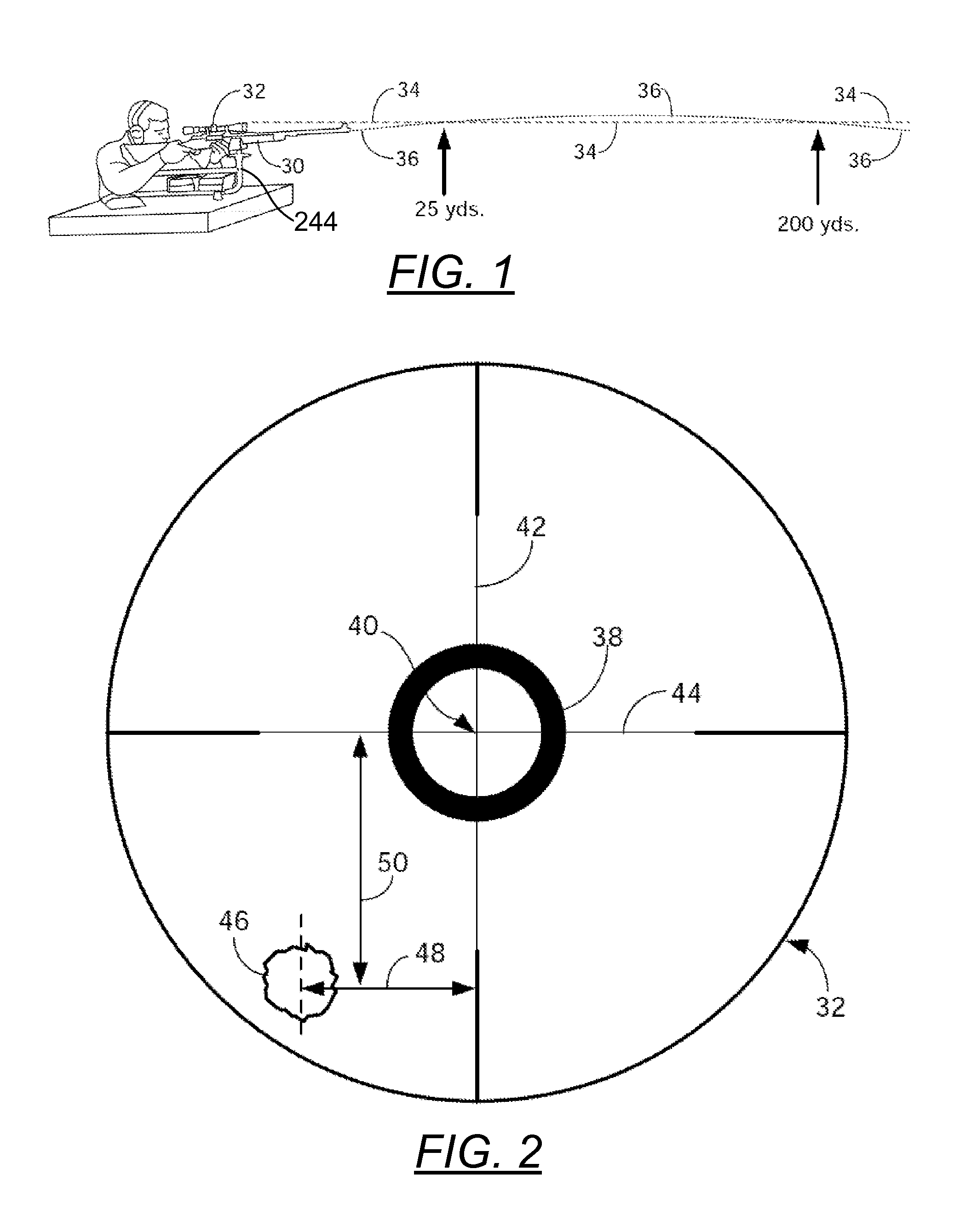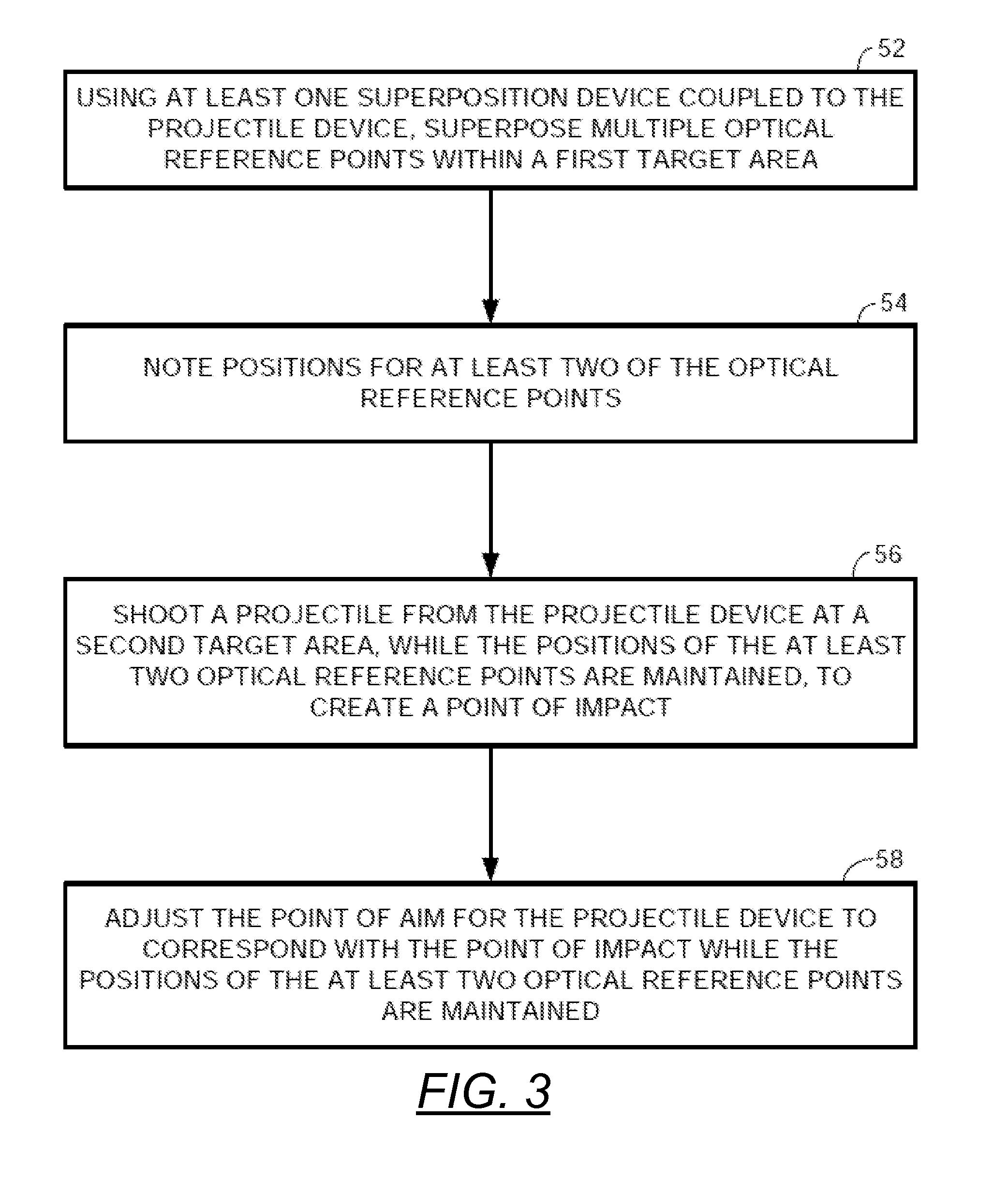Method and system for aligning a point of aim with a point of impact for a projectile device
a projectile device and point of impact technology, applied in the field of firearms, can solve the problems of difficult to determine the distance to turn the adjustment dial, difficult to hear in certain environments, and the knobs of the scope adjustment can often create audible clicks as they are turned
- Summary
- Abstract
- Description
- Claims
- Application Information
AI Technical Summary
Benefits of technology
Problems solved by technology
Method used
Image
Examples
Embodiment Construction
[0218]The term “about” is used herein to mean approximately, roughly, around, or in the region of. When the term “about” is used in conjunction with a numerical range, it modifies that range by extending the boundaries above and below the numerical values set forth. In general, the term “about” is used herein to modify a numerical value above and below the stated value by a variance of 20 percent up or down (higher or lower).
[0219]The term “marking beam” or “beam” is used herein to mean (1) a beam emanating from a superposition device, the beam is used in producing a dot in a first target area where the dot is to be marked as a reference point in a first target area, or (2) a beam emanating from a superposition device, the beam is used in superimposing a reference point that is pre-printed or otherwise made available in a first target area.
[0220]FIG. 3 illustrates one embodiment of a method of aligning a point of aim with a point of impact for a projectile device. A projectile devic...
PUM
 Login to View More
Login to View More Abstract
Description
Claims
Application Information
 Login to View More
Login to View More - R&D
- Intellectual Property
- Life Sciences
- Materials
- Tech Scout
- Unparalleled Data Quality
- Higher Quality Content
- 60% Fewer Hallucinations
Browse by: Latest US Patents, China's latest patents, Technical Efficacy Thesaurus, Application Domain, Technology Topic, Popular Technical Reports.
© 2025 PatSnap. All rights reserved.Legal|Privacy policy|Modern Slavery Act Transparency Statement|Sitemap|About US| Contact US: help@patsnap.com



